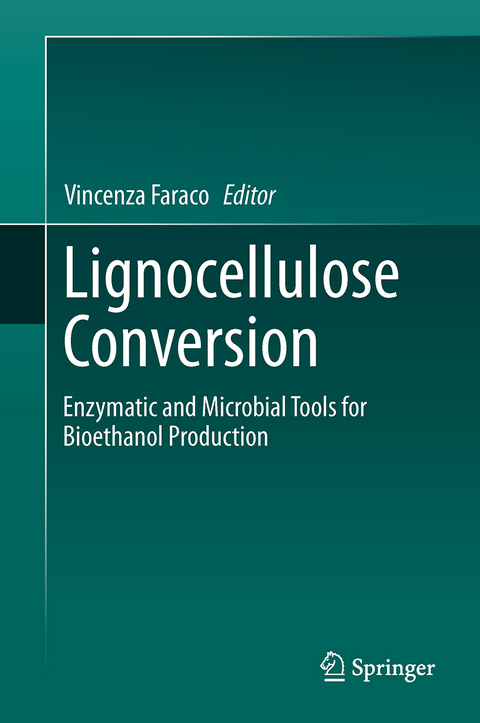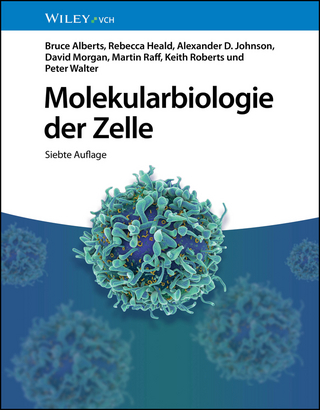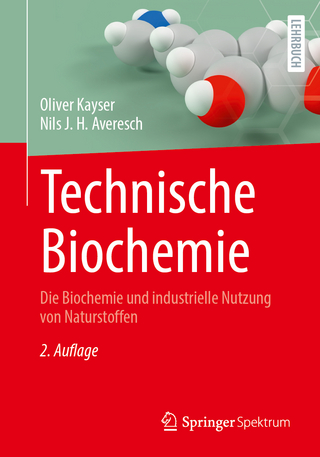
Lignocellulose Conversion
Enzymatic and Microbial Tools for Bioethanol Production
Seiten
2015
|
1. Softcover reprint of the original 1st ed. 2013
Springer Berlin (Verlag)
978-3-642-44260-5 (ISBN)
Springer Berlin (Verlag)
978-3-642-44260-5 (ISBN)
This book presents the main tools, the current technological developments and future prospects in cellulosic ethanol production and research. It describes the route towards second generation bioethanol production.
Bioethanol has been recognized as a potential alternative to petroleum-derived transportation fuels. Even if cellulosic biomass is less expensive than corn and sugarcane, the higher costs for its conversion make the near-term price of cellulosic ethanol higher than that of corn ethanol and even more than that of sugarcane ethanol. Conventional process for bioethanol production from lignocellulose includes a chemical/physical pre-treatment of lignocellulose for lignin removal, mostly based on auto hydrolysis and acid hydrolysis, followed by saccharification of the free accessible cellulose portions of the biomass. The highest yields of fermentable sugars from cellulose portion are achieved by means of enzymatic hydrolysis, currently carried out using a mix of cellulases from the fungus Trichoderma reesei. Reduction of (hemi)cellulases production costs is strongly required to increase competitiveness of second generation bioethanol production. The final step is the fermentation of sugars obtained from saccharification, typically performed by the yeast Saccharomyces cerevisiae. The current process is optimized for 6-carbon sugars fermentation, since most of yeasts cannot ferment 5-carbon sugars. Thus, research is aimed at exploring new engineered yeasts abilities to co-ferment 5- and 6-carbon sugars. Among the main routes to advance cellulosic ethanol, consolidate bio-processing, namely direct conversion of biomass into ethanol by a genetically modified microbes, holds tremendous potential to reduce ethanol production costs. Finally, the use of all the components of lignocellulose to produce a large spectra of biobased products is another challenge for further improving competitiveness of second generation bioethanol production, developing a biorefinery.
Bioethanol has been recognized as a potential alternative to petroleum-derived transportation fuels. Even if cellulosic biomass is less expensive than corn and sugarcane, the higher costs for its conversion make the near-term price of cellulosic ethanol higher than that of corn ethanol and even more than that of sugarcane ethanol. Conventional process for bioethanol production from lignocellulose includes a chemical/physical pre-treatment of lignocellulose for lignin removal, mostly based on auto hydrolysis and acid hydrolysis, followed by saccharification of the free accessible cellulose portions of the biomass. The highest yields of fermentable sugars from cellulose portion are achieved by means of enzymatic hydrolysis, currently carried out using a mix of cellulases from the fungus Trichoderma reesei. Reduction of (hemi)cellulases production costs is strongly required to increase competitiveness of second generation bioethanol production. The final step is the fermentation of sugars obtained from saccharification, typically performed by the yeast Saccharomyces cerevisiae. The current process is optimized for 6-carbon sugars fermentation, since most of yeasts cannot ferment 5-carbon sugars. Thus, research is aimed at exploring new engineered yeasts abilities to co-ferment 5- and 6-carbon sugars. Among the main routes to advance cellulosic ethanol, consolidate bio-processing, namely direct conversion of biomass into ethanol by a genetically modified microbes, holds tremendous potential to reduce ethanol production costs. Finally, the use of all the components of lignocellulose to produce a large spectra of biobased products is another challenge for further improving competitiveness of second generation bioethanol production, developing a biorefinery.
Introduction: Potential of Cellulosic Ethanol.- Sources for Lignocellulosic Raw Materials for the Production of Ethanol.- The Pretreatment Step in Lignocellulosic Biomass Conversion: Current Systems and New Biological Systems.- The Saccharification Step: Trichoderma Reesei Cellulase Hyper Producer Strains.- The Saccharification Step: the Main Enzymatic Components.- Extremophilic (Hemi)cellulolytic Microorganisms and Enzymes.- The Alcohol Fermentation Step: the Most Common Ethanologenic Microorganisms Among Yeasts, Bacteria and Filamentous Fungi.- Other Ethanologenic Microorganisms.- Consolidated Bioprocessing for Improving Cellulosic Ethanol Production.
| Erscheint lt. Verlag | 16.7.2015 |
|---|---|
| Zusatzinfo | X, 199 p. 8 illus., 4 illus. in color. |
| Verlagsort | Berlin |
| Sprache | englisch |
| Maße | 155 x 235 mm |
| Themenwelt | Naturwissenschaften ► Biologie ► Biochemie |
| Naturwissenschaften ► Biologie ► Mikrobiologie / Immunologie | |
| Schlagworte | Bioethanol • Biofuels • Biomedical and Life Sciences • Biotechnology • cellulosic ethanol • enzymatic hydrolysis • Enzymology • lignocellulose conversion • lignocellulosic biomass • Microbiology • plant biochemistry • renewable and green energy |
| ISBN-10 | 3-642-44260-9 / 3642442609 |
| ISBN-13 | 978-3-642-44260-5 / 9783642442605 |
| Zustand | Neuware |
| Haben Sie eine Frage zum Produkt? |
Mehr entdecken
aus dem Bereich
aus dem Bereich
die Biochemie und industrielle Nutzung von Naturstoffen
Buch | Softcover (2024)
Springer Fachmedien (Verlag)
CHF 69,95


